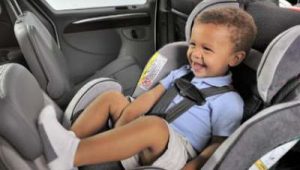 According to Utah State Law, Children must be in an appropriate child safety restraint until they can pass “The Seat Belt Fit Test”. Most older children can sit in a seat belt after they are 4’9″ tall.
According to Utah State Law, Children must be in an appropriate child safety restraint until they can pass “The Seat Belt Fit Test”. Most older children can sit in a seat belt after they are 4’9″ tall.
Utah Car Seat Laws
Go here for a list of 2018’s top rated Rear-Facing Car Seats.
Any parents in the Beehive State can easily double-check their knowledge of Utah’s official safety seat laws by reading through this brief article. In addition to telling you everything you need to know about Utah’s child safety seat laws, we’ll also give you a few links to helpful resources below.
- Age 0-12 months: Rear-Facing Car Seat only. Children are safest to start off in an infant-only rear facing car seat.
- Age 1-3 years: Children need to remain in a rear- facing car seat until they reach the height and weight limits of the car seat which is usually age 2 – 3 years old. These seats include convertible, 3-in-1 or other rear-facing car seats.
- Forward facing car seat: After the child has outgrown the rear-facing car seat, they move on to a forward facing car seat. Forward facing car seats include forward-facing only, convertible, 3-in-1 and Combination car seats. Children should remain in a forward facing car seat until they have outgrown the manufacturer’s guidelines for height and weight restrictions.
- Booster seat: Always use your forward-facing car seat to the maximum height or weight limit before moving your child to a booster seat. Always follow the age, weight, height and other guidelines provided by the car seat manufacturer.
- Seat Belt: A child is ready to use an adult seat belt without the aid of a booster seat will be around 4′ 9″ tall. Please keep in mind that because children do vary in size by age, some children could still need a booster seat at the age of 10 or 11. Children must be in an appropriate child safety restraint until they can pass “The Seat Belt Fit Test”
The Seat Belt Fit Test
- Have your child sit in a back seat with their bottom and back against the vehicle’s seat back.
Do the child’s knees bend at the seat’s edge? If yes, go on. If not, the child must stay in a booster seat. - Buckle the seat belt. Does the lap belt stay low on the hips? If yes, go on. If it rests on the soft part of the stomach, the child must stay in a booster seat.
- Look at the shoulder belt. Does it lay on the collarbone and shoulder? If yes, go on. If it is on the face or neck, the child must remain in a booster seat. NEVER put the shoulder belt under the child’s arm or behind the child’s back. Do not allow children to play with the shoulder portion of a seat belt.
- Can the child maintain the correct seating position with the shoulder belt on the shoulder and the lap belt low across the hips? If yes, the child has passed the Safety Belt Fit Test. If no, the child should return to a booster seat and retest in a month.
Additional Resources:
- The top rated Rear-Facing Car Seats
- Utah Car Seat Inspection Stations
- Click It Utah’s child safety laws
- For more safety information, please check out this YouTube video put out by the Utah group Zero Fatalities. You’ll learn how to properly install your child’s safety seat in your car in this helpful video. You can also listen to this informative report on child safety seats by Dr. Cindy Gellner on the University of Utah’s health program The Scope.
- Finally, anyone who wants a list of approved passenger safety technicians in Utah should take a look at this pamphlet.
